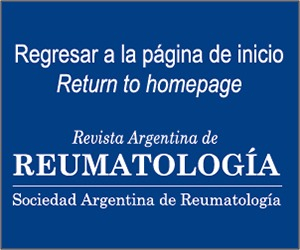SAPHO
Puesta al día
Resumen
SAPHO es un acrónimo en el que se incluye sinovitis, acné, pustulosis, hiperostosis y osteítis, corresponde a una entidad clínica que abarca varias manifestaciones osteoarticulares y dermatológicas que pueden aparecer en el mismo paciente de forma simultánea o sucesiva a lo largo de su vida; tiene características radiológicas importantes al momento de establecer el diagnóstico y su origen es multifactorial interviniendo factores genéticos, sobre todo en los genes LPNI2 y NOD2 ubicados en el cromosoma 18, infecciosos e inmunológicos. Dentro de los aspectos clínicos relevantes destaca la afectación de la pared anterior del tórax que puede ser tan notable como para llegar a producir compresión de las venas subclavia y cava superiores, lo cual puede conducir a trombosis vascular debido a la hiperostosis y a la compresión extrínseca por una masa de partes blandas en el mediastino. Desde su identificación, la primera línea de tratamiento ha sido el uso de AINE; sin embargo, muchos medicamentos inmunosupresores se han desarrollado para su tratamiento, el uso de anti-TNF ha mostrado eficacia para reducir las manifestaciones articulares, óseas y de piel y, por tanto, se ha convertido en una excelente opción para el tratamiento.Citas
I. Chamot AM, Benhamou CL, Kahn MF, Beraneck L, Kaplan G, Prost A. [Acne-pustulosis-hyperostosis-osteitis syndrome. Results of a national survey. 85 cases]. Rev Rhum Mal Osteoartic. 1987;54(3):187-96.
II. Carneiro S, Sampaio-Barros PD. SAPHO syndrome. Rheum Dis Clin North Am. 2013;39(2):401-18.
III. Kahn MF, Khan MA. The SAPHO syndrome. Baillieres Clin Rheumatol. 1994;8(2):333-62.
IV. Beretta-Piccoli BC, Sauvain MJ, Gal I, Schibler A, Saurenmann T, Kressebuch H, et al. Synovitis, acne, pustulosis, hyperostosis, osteitis (SAPHO) syndrome in childhood: a report of ten cases and review of the literature. Eur J Pediatr. 2000;159(8):594-601.
V. Colina M, Govoni M, Orzincolo C, Trotta F. Clinical and radiologic evolution of synovitis, acne, pustulosis, hyperostosis, and osteitis syndrome: a single center study of a cohort of 71 subjects. Arthritis Rheum. 2009;61(6):813-21.
VI. Salles M, Olive A, Perez-Andres R, Holgado S, Mateo L, Riera E, et al. The SAPHO syndrome: a clinical and imaging study. Clin Rheumatol. 2011;30(2):245-9.
VII. Burgemeister LT, Baeten DL, Tas SW. Biologics for rare inflammatory diseases: TNF blockade in the SA PHO syndrome. Neth J Med. 2012;70(10):444-9.
VIII. Arnson Y, Rubinow A, Amital H. Secondary syphilis presenting as SAPHO syndrome features. Clin Exp Rheumatol. 2008;26(6):1119-21.
IX. Trimble BS, Evers CJ, Ballaron SA, Young JM. Intraarticular injection of Propionibacterium acnes causes an erosive arthritis in rats. Agents Actions. 1987;21(3-4):281-3.
X. H urtado-Nedelec M, Chollet-Martin S, Nicaise-Roland P, Grootenboer-Mignot S, Ruimy R, Meyer O, et al. Characterization of the immune response in the synovitis, acne, pustulosis, hyperostosis, osteitis (SAPHO) syndrome. Rheumatology (Oxford). 2008;47(8):1160-7.
XI. G rosjean C, Hurtado-Nedelec M, Nicaise-Roland P, Ferreyra-Dillon R, Bollet C, Quintin E, et al. Prevalence of autoantibodies in SAPHO syndrome: a single-center study of 90 patients. J Rheumatol. 2010;37(3):639-43.
XII. Maugars Y, Berthelot JM, Ducloux JM, Prost A. SAPHO syndrome: a followup study of 19 cases with special emphasis on enthesis involvement. J Rheumatol. 1995;22(11):2135-41.
XIII. McPhillips A, Wolford LM, Rodrigues DB. SAPHO syndrome with TMJ involvement: review of the literature and case presentation. Int J Oral Maxillofac Surg. 2010;39(12):1160-7.
XIV. Wipff J, Adamsbaum C, Kahan A, Job-Deslandre C. Chronic recurrent multifocal osteomyelitis. Joint Bone Spine. 2011;78(6):555-60.
XV. A bul-Kasim K, Nilsson T, Turesson C. Intracranial manifestations in SAPHO syndrome: the first case report in literature. Rheumatol Int. 2012;32(6):1797-9.
XVI. Legoupil N, Revelon G, Allain J, Voisin MC, Rahmouni A, Chevalier X, et al. Iliac vein thrombosis complicating SAPHO syndrome: MRI and histologic features of soft tissue lesions. Joint Bone Spine. 2001;68(1):79-83.
XVII. Kawabata T, Morita Y, Nakatsuka A, Kagawa H, Kawashima M, Sei T, et al. Multiple venous thrombosis in SAPHO syndrome. Ann Rheum Dis. 64. England 2005. p. 505-6.
XVIII. Smith M, Buller A, Radford R, Laitt R, Leatherbarrow B. Ocular presentation of the SAPHO syndrome. Br J Ophthalmol. 89. England 2005. p. 1069-70.
XIX. Sonozaki H, Mitsui H, Miyanaga Y, Okitsu K, Igarashi M, Hayashi Y, et al. Clinical features of 53 cases with pustulotic arthro-osteitis. Ann Rheum Dis. 1981;40(6):547-53.
XX. Benhamou CL, Chamot AM, Kahn MF. Synovitis-acne-pustulosis hyperostosis-osteomyelitis syndrome (SAPHO). A new syndrome among the spondyloarthropathies? Clin Exp Rheumatol. 1988;6(2):109-12.
XXI. Laredo JD, Vuillemin-Bodaghi V, Boutry N, Cotten A, Parlier-Cuau C. SAPHO syndrome: MR appearance of vertebral involvement. Radiology. 2007;242(3):825-31.
XXII. Sugimoto H, Tamura K, Fujii T. The SAPHO syndrome: defining the radiologic spectrum of diseases comprising the syndrome. Eur Radiol. 1998;8(5):800-6.
XXIII. Colina M, La Corte R, Trotta F. Sustained remission of SAPHO syndrome with pamidronate: a follow-up of fourteen cases and a review of the literature. Clin Exp Rheumatol. 2009;27(1):112-5.
XXIV. Valls-Roc M, Sanmarti M, Salles M, Holgado S, Olive A. SAPHO syndrome and pamidronate revisited. Rheumatology (Oxford). 44. England2005. p. 137; author reply -8.
XXV. Massara A, Cavazzini PL, Trotta F. In SAPHO syndrome anti-TNF-alpha therapy may induce persistent amelioration of osteoarticular complaints, but may exacerbate cutaneous manifestations. Rheumatology (Oxford). 2006;45(6):730-3.
XXVI. Sabugo F, Liberman C, Niedmann JP, Soto L, Cuchacovich M. Infliximab can induce a prolonged clinical remission and a decrease in thyroid hormonal requirements in a patient with SAPHO syndrome and hypothyroidism. Clin Rheumatol. 2008;27(4):533-5.
XXVII. Garcovich S, Amelia R, Magarelli N, Valenza V, Amerio P. Long - term treatment of severe SAPHO syndrome with adalimumab: case reporte and a review of the literature. Am J Clin Dermatol. 2012 Feb 1;13(1):55-9
XXVIII. L eone A, Cassar-Pullicino VN, Casale R, Magarelli N, Semprini A, Colosimo C. The SAPHO syndrome revisited with an emphasis on spinal manifestations. Skeletal Radiol. 2014;44(1):9-24.
Derechos de autor 2018 Sociedad Argentina de Reumatología

Esta obra está bajo licencia internacional Creative Commons Reconocimiento-NoComercial-SinObrasDerivadas 4.0.






